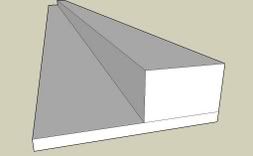have read byrons comments with interest, but i'm with alf and scrit.
the main problem with any ANY guide system is making it fit the
lines, and holding it in place whilst you use the saw, and forcing the saw along any system gives sideways momentum. festo in fact recommend
that you use the clamps at either end of the rail to ensure accuracy, and as we have seen joining their rails has some problems for some people.
to most people the problem is ensuring that you measure the offset correctly and keep the blade straight. using mfc or mdf to produce a
fenced guide is almost as stable as aluminium. indeed in view of some
of the honeycomb ally i have seen, i wonder whether it might not
be more accurate.
on any system that cuts 8 feet that relies upon a man pushing the saw
you need to change position at least three times. with any system that just relies upon "gravity" rubber backing, rather than fixing clamps you can
get some problems with accuracy.
having used both the scrit and alf method, as well as the mafell and festo ones, i think the advantage of the metal ones is that you tend not to abuse the rails in the same way as you would a piece of wood lying around in your workshop.
where all the major manufacturers systems fail at this time is when moving across a sheet for repeat cuts at the same width, and this i believe
dino has an answer too. mafell have a newer saw which has a right angle attachment which allows cross cuts up to 18 inches 400 mm,
and i believe that this could be adapted as a repeat spacer, but you are still dependant upon your blade staying sharp and properly set for many cuts. if you are lipping things, then break out is not as important as it might sound, and i have not had much on any of my saws.
break out is caused mainly by too much blade showing under the cut
as well as using the wrong blade for the job, which we all through laziness
tend to do.
i understand where you are coming from byron, but as an engineer i must say that parts of your reasons are specious.

but then we all make the choice of how to spend our own money. :twisted:
paul :wink:





